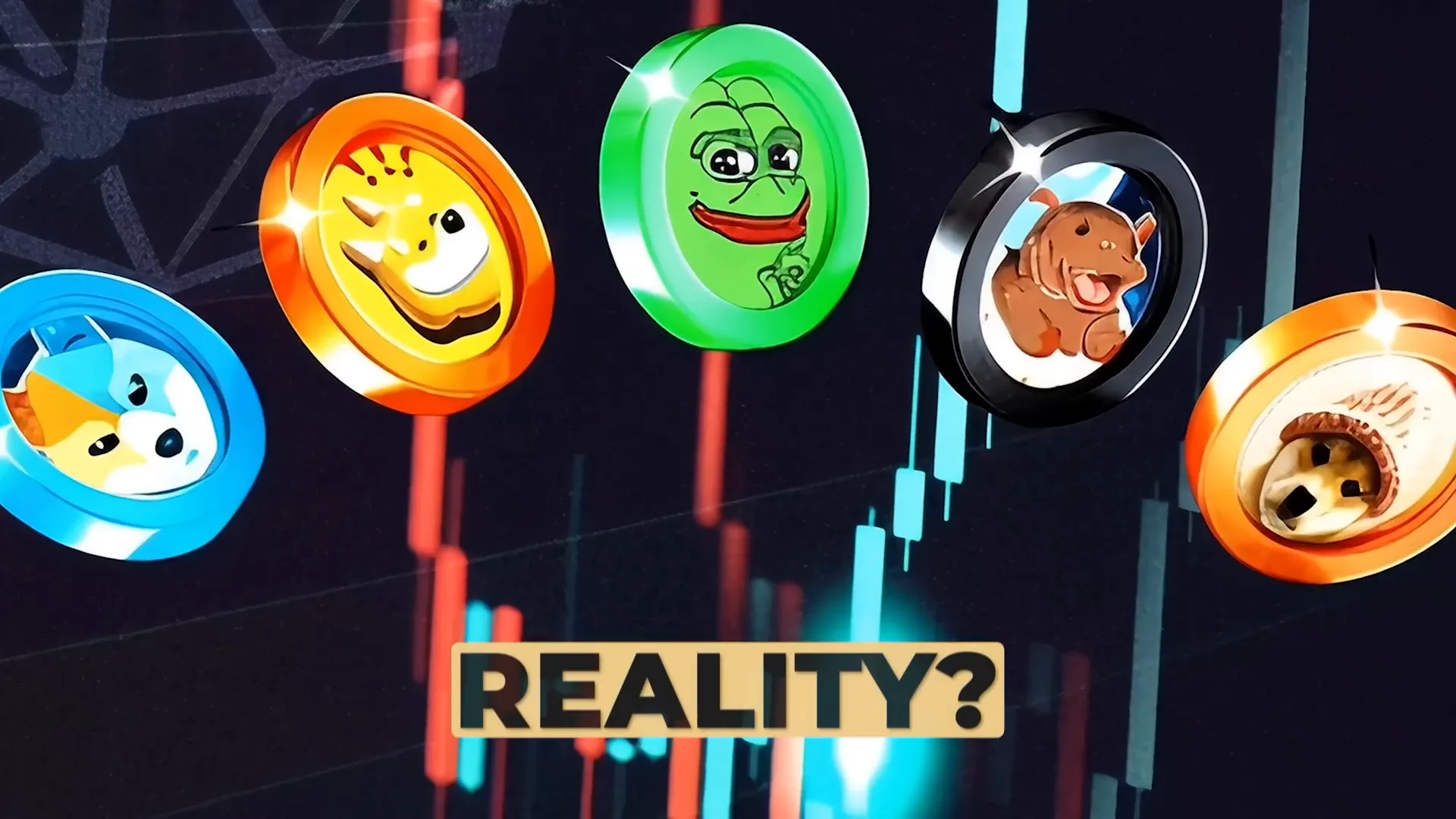
Remember when “everything on chain” was just a meme? Well, that meme is fast becoming reality. Today, you can swap your meme coins for tokenized stocks like Tesla or Nvidia, backed one-for-one by real shares. Even better, you can do this without ever contacting a traditional broker—and in some cases, without KYC. This new frontier of tokenized equities is blurring the lines between traditional finance and crypto, opening up exciting opportunities and challenges alike.
Let’s dive deep into the rise of tokenized stocks, the players driving this revolution, how you can get involved, and the risks you need to be aware of before jumping in.

Table of Contents
- Why Tokenize Stocks? Understanding the Shift from TradFi to Crypto
- Leading Players in Tokenized Stocks: From Crypto Natives to Retail Giants
- How Tokenized Stocks Work in Practice
- Centralized Exchanges Join the Movement
- Risks and Challenges to Keep in Mind
- The Road Ahead: Tokenized Stocks as the Future of Finance
Why Tokenize Stocks? Understanding the Shift from TradFi to Crypto
BlackRock CEO Larry Fink has been vocal about asset tokenization being the future of finance. But why tokenize stocks, and how exactly does it work?
Traditional equities still operate on systems designed decades ago. When you trade a stock, it can take hours or even days for clearing houses to settle transactions and reconcile records. Paper certificates often sit idle in vaults. This outdated process causes delays and inefficiencies—especially painful when markets move fast after hours or on weekends.
Put those shares on a blockchain, however, and the entire process compresses into seconds. Blockchain operates 24/7, allowing real-time settlement and dramatically improving operational efficiency. This means no more waiting in limbo for trades to finalize, even during shocking market events outside traditional trading hours.
Beyond speed, tokenized stocks enable global, borderless access. Thanks to decentralized exchanges (DEXs), anyone worldwide can trade these assets anytime, often without the restrictions of traditional brokerage accounts. Plus, fractional ownership is a native feature: instead of buying a whole Tesla stock, you could own just 0.33 of a tokenized share, or use fractions as collateral in DeFi lending markets.

Leading Players in Tokenized Stocks: From Crypto Natives to Retail Giants
Several key players are pioneering tokenized stocks today. Let’s look at some notable examples:
- Bakkt Finance: Based in Zurich and regulated in Switzerland, Bakkt Finance recently launched xStox on Solana. They back each tokenized stock 1:1 with real shares held by licensed custodians. Their tokens mirror real stocks via peg and arbitrage mechanisms, allowing professional market makers to redeem or mint tokens to maintain parity with underlying assets. Trading is open 24/7, fractional, and permissionless—no mandatory KYC required.
- Denari: A San Francisco startup, Denari became the first U.S. company to earn a broker-dealer license solely for tokenized equities. They issue ERC-20 shares backed 1:1 by U.S. custodian-held stock, opening the door for on-chain U.S. equities with regulatory approval.
- Robinhood: The retail trading giant recently unveiled over 200 tokenized U.S. stocks and ETFs on Arbitrum for EU users. They plan to migrate these assets onto their own RHO chain later this year, promising a platform optimized for real-world assets with full self-custody and 24/7 trading access.
Each of these projects operates independently with separate custody and liquidity setups, yet they collectively signal growing regulatory acceptance on both sides of the Atlantic.
How Tokenized Stocks Work in Practice
Imagine trading a Tesla share not in hours or days, but milliseconds, directly on a blockchain. That’s what Bakkt’s xStox on Solana offers. Their initial launch included over 60 U.S. stocks and ETFs, with every SPL token backed 1:1 by segregated real shares held by Swiss custodians such as Incorp Bank.
Chainlink oracles provide real-time proof of reserve attestations, ensuring transparency and trust that tokens remain fully collateralized. From the user perspective, swapping SOL for XTSLA tokens feels just like swapping SOL for a stablecoin like USDC.
Liquidity flows through decentralized exchanges like Raydium, enabling fractional trades anytime—even at 2 a.m. on a Sunday, when someone might be inspired by a bullish Nvidia thread on social media.
A key innovation is the absence of mandatory KYC in some flows, preserving user privacy—a foundational crypto ethos. Once tokenized stocks land in your wallet, you can engage with the broader DeFi ecosystem: provide liquidity, post tokens as collateral, or simply hold through earnings seasons. Creative DeFi applications around these assets are expected to flourish as the market expands.
Centralized Exchanges Join the Movement
Tokenized stocks are not confined to decentralized venues. Centralized exchanges (CEXs) are also embracing this new asset class:
- Kraken: Became the first major exchange to list Bakkt’s xStox tokens directly in their spot order book. Users can buy tokenized Apple stock with USD, withdraw tokens to on-chain wallets like Fantom, and use them in DeFi markets within minutes—no brokerage lockups or market close bells.
- Bybit: Rolled out the same xStox suite to select customers, promoting after-hours access to popular tech stocks. Bybit is also developing ByReal, a Solana-based hybrid DEX combining centralized order book speed with on-chain settlement.
- Robinhood: Beyond launching on Arbitrum for EU users, Robinhood aims to transition to their own RHO chain, unlocking 24/7 trading and full self-custody capabilities.
Other exchanges like Gemini and soon Coinbase (pending SEC approval) are also entering the tokenized equities space, signaling intense competition to capture this emerging market.
Risks and Challenges to Keep in Mind
Tokenized stocks offer exciting benefits, but they come with real-world risks that shouldn’t be overlooked:
- Censorship and Freezing Risks: Token issuers like Bakkt can block addresses flagged by sanctions or comply with court orders to pause or burn tokens. Compliance firms monitor for flagged wallets, meaning your tokens may be frozen like a bank account.
- Oracle and Data Risks: Chainlink oracles provide proof of reserve data, but oracles remain single points of failure. If price feeds or reserve attestations fail or are spoofed, decentralized exchanges could trade on incorrect data, risking price depegging.
- Liquidity Constraints: Early trading volumes are modest—millions daily versus billions in traditional markets. Sudden market moves off-hours could cause wide spreads and illiquidity.
- Corporate Actions and Rights: Many tokenized stocks provide only economic exposure without shareholder rights, such as voting or dividends. For example, Denari’s tokens exclude voting rights and Bakkt’s xStox disclaim shareholder privileges. Always read the fine print.
- Regulatory and Geographic Restrictions: Some exchanges restrict tokenized stock access by region. Bybit blocks users from the EEA, Australia, Japan, US, and UK, limiting access to KYC-cleared residents in select regions.
- Insurance Gaps: Tokenized shares often fall outside Securities Investor Protection Corporation (SIPC) coverage, meaning holders may not have broker-dealer protections in a market crash or insolvency.
- Network Risks: Solana, a leading platform for tokenized stocks, has faced network outages. If the chain stalls during market turbulence, tokens and trading could be temporarily inaccessible.
These risks combine to create a complex risk profile: assets that move at crypto speed but can be frozen, illiquid, uninsured, or stuck during outages. As TradFi and crypto integration matures, many of these issues should improve, but caution is warranted.
The Road Ahead: Tokenized Stocks as the Future of Finance
Tokenized stocks may feel like a new concept, but they’re already pointing to systemic change. McKinsey projects the total value of tokenized financial and real-world assets could reach $2 trillion by 2030, with optimistic scenarios doubling that. Ripple and Boston Consulting Group forecast nearly $19 trillion by 2033 as bonds, money markets, and equities move on-chain.
Regulatory clarity is the key catalyst. Each time regulators open the door, capital floods in. Centralized venues like Robinhood, Bybit, Kraken, and Gemini are racing to capture market share, while Solana emerges as a liquidity magnet with over 100 million daily transactions and millions of active addresses.
Future innovations may include automated rebalancing baskets, lending markets accepting tokenized stocks as collateral, and cross-chain interoperability enabling arbitrage between different token pools. Imagine a frictionless “everything exchange” where stocks, bonds, commodities, and yield-bearing stablecoins trade seamlessly under one roof.
While the risks remain real, tokenized stocks represent one of the most promising sectors in crypto’s evolution toward real-world assets (RWAs). A decade ago, everything on chain was a meme. Now, institutions worldwide are racing to make those memes a reality.
As this space grows, staying informed and cautious will be your best strategy to navigate the future of finance powered by cryptocurrency and bitcoin innovations.
Cryptocurrency and Bitcoin: The Tokenized Stock Explosion Set to Transform Finance. There are any Cryptocurrency and Bitcoin: The Tokenized Stock Explosion Set to Transform Finance in here.
